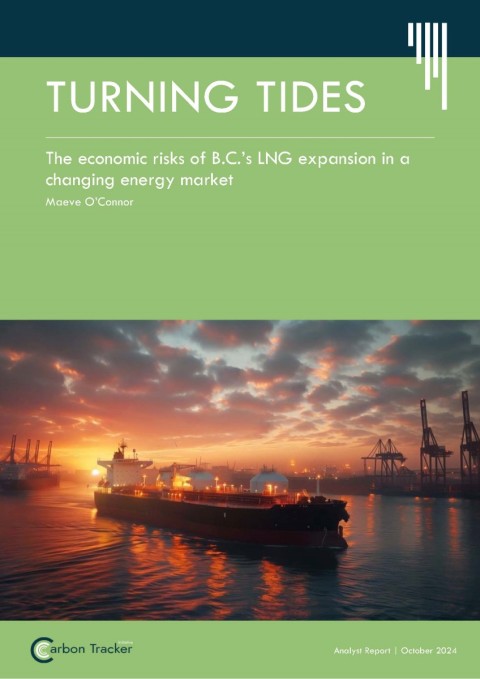There are currently eight liquified natural gas (LNG) terminal projects either operational, under construction, or proposed in British Columbia. Proponents have cited the expansion of the industry in the province as an important economic opportunity for B.C., which has large proven reserves of natural gas and could, if economically viable, ship product directly from Canada’s west coast to new markets in Asia, where some governments are taking steps to reduce their use of coal-fired electricity, or otherwise are looking to diversify their supply of natural gas due to concerns around energy security.
However, the economic opportunities associated with LNG expansion in B.C. hinge on presumed levels of future demand for natural gas in those markets and worldwide.
Turning Tides: The economic risks of B.C.’s LNG expansion in a changing energy market, published by UK-based financial think tank Carbon Tracker, and commissioned by the Pembina Institute and David Suzuki Foundation, provides an overview of the modelled breakeven costs of all currently proposed LNG projects globally that have yet to reach final investment decision. It concludes that the four LNG terminals still awaiting final investment decision in B.C. are likely to lose out to competition from producers in Qatar, the US and Mozambique – where significant volumes is set to be available at lower prices.
Meanwhile, based on expected operational dates and current development timelines, B.C.’s industry will ramp up just as global LNG demand is expected to plateau, making it a late entrant to a market dominated by established incumbents with potentially better opportunities for economies of scale.
These assessments are based on underlying data that shows the global LNG market is likely to be oversupplied by the end of this decade, as a glut of new production comes online. Carbon Tracker finds that, according to data from Rystad Energy and the International Energy Agency’s 2023 World Energy Outlook, there is already enough existing global LNG infrastructure to meet the level of demand that is likely to be in place by 2040 - even in a slower energy transition scenario.




